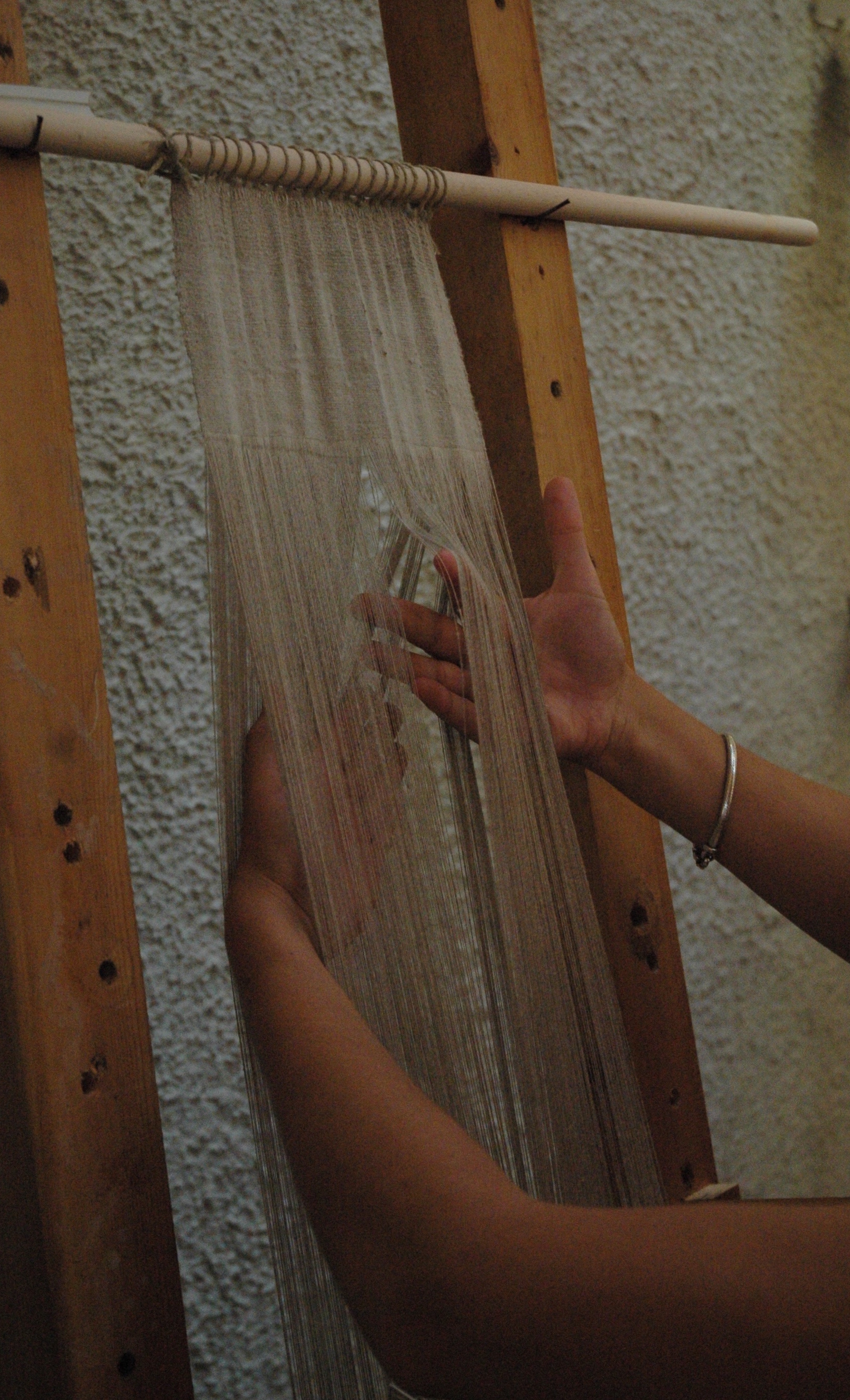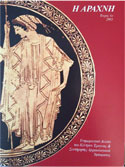APRIL'S WORD: HYPHAINEIN
Hyphainein is a very old and rich Greek verb of Indo-European origin. Its meaning, to weave, is the same in the Modern Greek language. It also has a broad metaphorical meaning, mostly as compound with the prepositions ἀν–, ἐν–, ἐξ–, παρ–, συν– etc. Example: ἐξυφαίνω, literally to remove the finished cloth from the loom, metaphorically ἐξυφαίνω δόλον, συνωμοσίαν, to organize a conspiracy; see to interweave, the web of lies etc. It has given derivatives such as ὑφαντός (woven), ὑφάντης (weaver), ὑφαντικός (—ὴ τέχνη, the art of weaving), ὕφασμα (fabric), ὑφή (web), παρυφή (selvedge) etc.
Its PΙΕ root has two forms, the full grade *ṷebh – (that includes the /e/, e.g. German web-en, English web) and the zero grade*ṷbh – used in Greek:*ṷbh – > uph– > υφ–, which, with the addition of the suffix an- and the ending /je-jo/ gave *hyph-an-jo > ὑφαίν-ω.
According to Beekes, the verb is mentioned in Linear B under the primary form of the root, *h1ṷebh – (namely with laryngeal that gave a prefix /e/); it would have been the verb *εϝέφω and there is the term ewepesesomena, ἐϝεφσησόμενα, that what will be woven, intended to be woven (part. fut. pass.).
Notes 1. PIE: Proto-Indo-European language (reconstructed).
2. The currently valid Greek etymological dictionaries are those by H. Frisk, P. Chantraine and the most recent one by R. Beekes (2010).
3. Very rich bibliography (almost 100 pages) for further reading and study in the excellent manual by M. Meier-Brügger, Indogermanische Sprachwissenschaft, 92010 [=Indo-European Linguistics, 2003].



